
F.A.R Soldier
-
Compteur de contenus
69 -
Inscription
-
Dernière visite
jamais
Messages posté(e)s par F.A.R Soldier
-
-
Marine, Moroccan and German military intelligence professionals conduct workshop for African Lion 13
By Sgt. Tatum Vayavananda | Marine Corps Forces Africa | May 02, 2013
AGADIR, Morocco --
U.S. Marine, Moroccan and German intelligence officers strengthened proficiency and interoperability with an Intelligence Capacity Building Workshop during Exercise African Lion 13, April 11-14.
“We are doing this workshop to work with the interoperability and intelligence portion and prepare for the Command Post Exercise that we will support” said Maj. Aaron L. Klein, an intelligence officer assigned to Task Force- African Lion 13.
“It’s a basic intelligence workshop, but it will show them a bit of how we do business,” said the Dallas native.
The ICBW was a four-day workshop that included a discussion on intelligence preparation of the environment (IPOE), systematic approaches to terrain, weather, and cultural considerations of strategic importance. Other topics covered standard terminology and procedures used in intelligence briefs, military grid-reference systems, and a review of maps created for use during the Command Post Exercise (CPX).
“It’s a great opportunity for them to work together and see how everyone does business. There’s excitement to see how Germans and the National Geospatial Association conduct operations and vice-versa,” added Klein, who is also the intelligence officer for 14th Marine Regiment, out of Fort Worth, Texas.
For the first time, German servicemembers from the Federal Republic of Germany's Armed Forces will participate in a geospatial intelligence exercise along with U.S. military professionals from the NGA.
“This enables us to be ‘multi-national’ and I think that is huge because this exercise is going to grow,” said Klein. “The more nations that play in it, the better it will become. We are honored that they are here and I think they are fitting great with the exercise.”
Unlike the U.S., that enables entry-level military intelligence specialist the opportunity to engage in the career field, partner-nation servicemembers do not train in the analysis of intelligence until the brigade officer levels. Lower-level commands have officers training in other specialties with the additional duty of passing gathered intelligence to their higher command. ICBW training helps these officers with a broad and varied range in operational intelligence affairs.
“In this case, they don’t have the formalized intelligence Military Occupational Specialty like the U.S., and I think they are operational-type officers that end up taking collateral roles,” said Klein. “Hopefully all these intelligence professionals are going to learn and get something out of this course that they can bring back to their intelligence communities.”
Exercise African Lion is an annual training exercise promoting military partnership between U.S. and Moroccan forces and is the largest exercise of its kind on the continent.
“We’re honored to be here and I think we’re doing great things,” Klein added. “Morocco has been one of our allies for such a long time and we like to take any chance to build on these partnerships and get to work with them.”
Exercise African Lion is a U.S. Africa Command-scheduled, U.S. Marine Corps Forces Africa- led, joint multi-lateral exercise. The joint task force consisting of U.S. Marines, soldiers, sailors and airmen were able to conduct modified joint training for Exercise African Lion 13, demonstrating their ability to adapt to unpredicted circumstances, restore mission essential tasks, build interoperability and create friendships during the remaining days of the evolution. The logistics component will continue to exercise vigilant, safe and rapid retrograde of almost 1,200 personnel and 250 short-tons of vehicles and equipment while working with Moroccan partners and contractors to sustain the force and redeploy them back to their home stations in a timely and efficient manner.

Captain Andrew Howard, an intelligence officer instructor assigned to Exercise African Lion 13, introduces “systematic approaches to terrain” during an Intelligence Capacity Building Workshop with U.S., Moroccan and German intelligence officers, April 11. Exercise African Lion is a U.S. Africa Command-scheduled, U.S. Marine Corps Forces Africa- led, joint multi-lateral exercise. The joint task force consisting of U.S. Marines, soldiers, sailors and airmen were able to conduct modified joint training for Exercise African Lion 13, demonstrating their ability to adapt to unpredicted circumstances, restore mission essential tasks, build interoperability and create friendships during the remaining days of the evolution. The logistics component will continue to exercise vigilant, safe and rapid retrograde of almost 1,200 personnel and 250 short-tons of vehicles and equipment while working with Moroccan partners and contractors to sustain the force and redeploy them back to their home stations in a timely and efficient manner. (Photo by Sgt. Tatum Vayavananda)
U.S., Moroccan, German servicemembers conduct UAV familiarization for African Lion 13
U.S. Marines, along with German and Moroccan counterparts, conducted a small unmanned-flying vehicle familiarization course for Exercise African Lion 13, in Agadir, Morocco, that shared the capabilities of the RQ-11B Raven as part of the Intelligence Capacity Building Workshop, April 13.
The RQ-11B Raven, or “Raven-B,” is the Marine Corps’ lightweight, hand-launched Unmanned Air Vehicle that provides reconnaissance, surveillance, and target acquisition used in contingency operations around the world.
“The Moroccan and German soldiers went through a quick brief on Small Unmanned Aerial Systems and a flight simulator to get more familiarization with the aircraft,” said Sgt. Clayton J. LaGesse, an intelligence specialist from 2nd Battalion, 14th Marine Regiment supporting AL-13.
The UAV is classified as a Small Unmanned Aerial Vehicle that can operate at a maximum service “ceiling” of more than 10,000 feet.
“After that, we went out into the field and I conducted a flight demonstration,” said LaGesse, a Menomomee Falls, WI native. “It’s a one-man wrecking crew because you can indicate targets and keep troops safe on the ground with just one person if you needed to.”
An important aspect of the Raven-B is that it provides small units with situational awareness and can be employed in all environments for direct or general reconnaissance as well as offensive and defensive force-protection operations.
“The Raven-B is an excellent asset to Marines on the ground; it can be launched from a moving vehicle to recon the road ahead, identify dangers and survey the perimeter of the convoy,” added LaGesse.
The small price of the system is a force multiplier that provides immense advantage in real-world operations. The Raven-B is constructed of thin, water-resistant Kevlar material and weighs less than a loaded M4 service carbine with magazines, at only four pounds,. Coupled with the flight system, it weighs less than an M249 Squad-Automatic Weapon with a combat load of ammunition.
The Raven-B has the capability to be equipped with three different cameras, or “payloads”; one aiming forward, and one for each side of the nose cone. The cameras can record video footage with a live-stream back to the ground-control station and can capture still photographs, regardless of the time of day with the addition of an Infra-Red camera capability for night-time surveillance.
“We were shown the basics [of the Raven-B] and it makes sense that you would have that capability,” said German Maj. Timon Hoppe, the officer-in-charge of the German geospatial intelligence cell participating in African Lion 13.
The U.S. Marines, sailors, and soldiers, along with German and Moroccan counterparts, saw the Raven-B in action as it flew a 2km flight path demonstrating its capability to survey the surrounding area. Members of the class were able to watch the live-video feed as the Raven-B flew through the training area and around the observers.
“We were shown how [the Raven-B]is set up, maintained, and how it’s operated and it was interesting to see and very impressive because we have UAVs like that, but it was the first time I saw it live,” said Hoppe, a Husum, Germany, native.
The ICBW training helped U.S., Moroccan and German officers share procedures to build a broad, varied and enhanced understanding of each country’s intelligence strategies and capabilities.
“It’s important they get a sense of our capabilities because they are our partners, so they are part of our link to North Africa,” said LaGesse. “With our partnerships, we can have a bit more understanding of the culture and the environment.”
Exercise African Lion 13 is an annually-scheduled military engagement promoting partnership between the U.S. and Moroccan forces and is the largest exercise of its kind on the continent. For the first time, members of the Federation of German Armed Forces participated in a geospatial portion of the exercise.
“The partnerships, whether it’s air, ground, or command-level, is forming bonds and bringing more cohesion between our militaries,” said LaGesse. “It’s vital to our friendships with [international] militaries, should we have a contingency effort and we ever need to work together.”
The U.S. Africa Command-scheduled multi-lateral exercise is led by U.S. Marine Corps Forces, Africa with support from Marine, Army, Air Force and Navy units throughout the U.S. The joint task force consisting of U.S. Marines, soldiers, sailors and airmen were able to conduct modified bi-lateral and joint training for Exercise African Lion 13 demonstrating their ability to adapt to unpredicted circumstances, restore mission-essential tasks, build interoperability and create friendships during the three-week evolution. The logistics component exercised vigilant, safe and rapid retrograde of almost 1,200 personnel and 250 short-tons of vehicles and equipment while working with Moroccan partners and contractors to sustain the force and redeploy them back to their home stations in a timely and efficient manner.
US Marines


U.S. Marines, along with German and Moroccan counterparts, conducted a small unmanned-flying vehicle familiarization course for Exercise African Lion 13, April 13, in Agadir, Morocco, that shared the capabilities of the RQ-11B Raven as part of the Intelligence Capacity Building Workshop. Exercise African Lion 13 was a U.S. Africa Command-directed, U.S. Marine Corps Forces Africa-led multi-lateral military engagement between U.S., Moroccan and German armed forces. The joint task force consisting of U.S. Marines, soldiers, sailors and airmen were able to conduct modified bi-lateral and joint training for Exercise African Lion 13 demonstrating their ability to adapt to unpredicted circumstances, restore mission-essential tasks, build interoperability and create friendships during the three-week evolution. The logistics component exercised vigilant, safe and rapid retrograde of almost 1,200 personnel and 250 short-tons of vehicles and equipment while working with Moroccan partners and contractors to sustain the force and redeploy them back to their home stations in a timely and efficient manner.

Before a flight demonstration of the RQ-11 B “Raven,” an Unmanned Aerial Vehicle, Sgt. Clayton P. LaGesse, an intelligence Marine assigned to 14th Marine Regiment, reviews coordinates during a Small Unmanned Aerial Systems class as part of the Intelligence Capacity Building Workshop of Exercise African Lion 13.

During the pre-flight inspection, Capt. Andrew Howard and Sgt. Clayton P. LaGesse, instructors for the Intelligence Capacity Building Workshop of Exercise African Lion 13, perform an operation check of the cameras onf the RQ-11B “Raven” Unmanned Aerial Vehicle.

During the pre-flight inspection, Capt. Andrew Howard and Sgt. Clayton P. LaGesse, instructors for the Intelligence Capacity Building Workshop of Exercise African Lion 13, perform an operation check on the body of the RQ-11B “Raven” Unmanned Aerial Vehicle.

During the pre-flight inspection, Capt. Andrew Howard and Sgt. Clayton P. LaGesse, instructors for the Intelligence Capacity Building Workshop of Exercise African Lion 13, perform an operation check on the body of the RQ-11B “Raven” Unmanned Aerial Vehicle.

U.S. servicemembers, along with Moroccan and German military intelligence counterparts, observe Sgt. Clayton P. LaGesse and Capt. Andrew Howard, instructors for the Intelligence Capacity Building Workshop of Exercise African Lion 13, as they perform a pre-flight operations check with the RQ-11B “Raven,” an Unmanned Aerial Vehicle used for surveillance and reconnaissance.

During the pre-flight inspection, Capt. Andrew Howard and Sgt. Clayton P. LaGesse, instructors for the Intelligence Capacity Building Workshop of Exercise African Lion 13, perform an operation check of the cameras onf the RQ-11B “Raven” Unmanned Aerial Vehicle.
-
Ah mon ami , sur ce point on est daccord , c'est le Nirvana nul part , que ce soit au Maroc ou en Algérie .
Mais l'Algérie c'est un pays pétrolier et gazier , et la tu va pas me contredire non ?? Est ce que c'est acceptable une situation de ce genre , dans un pays avec autant de ressources naturelles , a fortiori une région aussi riche ! Le Maroc ne rentre pas dans cette équation , on a ni gaz ni pétrole ni rien du tout , et on avance quand meme avec nos moyens , on batit une économie qui j'espere sera prospere , pour l'avenir du pays .
L'apres petrole pour l'Algérie , c 'est 2020 , je ne vois pas comment le pays va aller de l'avant sans une économie solide , loin du pétrole ou du gaz . On dirait que vos dirigeants s'en foutent carrément , il n'ont pas une vision sur le long terme , et un jour , ils se reveilleront , mais sa sera trop tard ...
Ma réflexion elle portait seulement sur ce point , loin de moi l'idée de dire "Il n'y a que en Algérie que des choses comme sa se passe " , c'est la meme chose au Maroc , en Tunisie et j'en passe .
-
ALERTE : Crash d'un avion militaire américain au Kirgiztan . Pas de bilan officiel pour l'instant ( AL jAZEERA)
-
Emeutes a Ouargla :
http-~~-//www.youtube.com/watch?feature=player_detailpage&v=rH1z06V2gJo
http-~~-//www.youtube.com/watch?v=FWo4Fty8964&feature=player_detailpage
Cette vidéo déchire le coeur . C'est quand meme incroyable , que dans une région petrolifére de premier plan , en 2013 , les habitants y vivent dans ces conditions déplorables . Vous etes un pays pétrolier et gazier quand meme ...
http-~~-//www.youtube.com/watch?feature=player_embedded&v=-gglX5BWkLc
-
Avec vous les Ch-47D commandés en 2009 ?
Non pas encore , mais sa ne saurait tardé , puisque en 2012 , les cours de formation ont commencé pour 4 pilotes et 3 mécanos . Je pense que pour le prochain Aero Expo a Marrakech , ils seront présenté au public .

-
CH-47C





-

Le CNAPS , autrement dit la DRS algérienne , finance des manifestations a l'interieur du Maroc . Oh neutralité neutralité bien suur
-
Mirage 2000
dans Europe
Personelement , je trouve que c'est pas trop cher , 350 millions d'euros pour 27 avions , au vu des capacités qu'ils ont maintenant . De plus , les pilotes marocains (j'ai mes sources Chuut :lol:) en sont tres content , lors des differents exercices , ils ont meme été surpris par les nouvelles performances du coucou .
-
Mirage 2000
dans Europe
Mirage MF2000 de la JV ASTRAC
Astrac, société commune de Sagem et Thales,
est spécialisée dans la modernisation
des avions de combat.
Cette JV est actuellement en charge du
programme de modernisation des Mirage
F1 du Royaume du Maroc (photo ci-dessous).
Elle propose une modernisation complète
de la plate-forme Mirage F1, sous le nom
de MF2000, lui conférant des capacités
opérationnelles équivalentes à celles des
avions de combat les plus récents. Cette solution
repose sur une architecture système
comprenant un cockpit modernisé, deux
calculateurs centraux Dynamic et des centrales
de navigation hybridée GPS de type
SIGMA de Sagem, des missiles air-air MICA
EM et IR et air-surface AM39 Exocet de
MBDA, un radar multifonction RDY-3, un
pod de désignation laser jour-nuit Damocles,
un pod d’autoprotection guerre électronique
de type PAJ FA et un détecteur
d’alerte radar de Thales. Il est également
capable d’emporter 4 armements guidés
de précision AASM de Sagem, dans la version
AASM 250.
http://www.sagem-ds.com/IMG/pdf/fr_07.pdf
Oui, je crois.
Ok . Merci ;)
-
Mirage 2000
dans Europe
Ah voila merci Syntaxerror , je me disait bien je ne suis pas fou , je suis novice en la matiere , mais je sais que nos mirage modernisé ont cette apellation de MF 2000 . Donc si je comprend bien, un Mirage F1 ASTRAC est l'equivalent d'un 2000 c'est sa ?
-
Mirage 2000
dans Europe
C'est une blague ...
J'apprend aupres des forumers , et tu te sens obligé d'intervenir . Il est ou le probleme?
-
@scorpion : Tu n'a pas une source plus récente ?? Parce une source qui remonte a 17 ans , c'est pas du tout crédible .
-
Mirage 2000
dans Europe
Ok ok c'est noté (loin de moi l'idée de vouloir le comparer au Rafy , j'ai juste constaté certaines similitudes et voila )
-
Mirage 2000
dans Europe
Mirage F2000 marocains =|
Passage en formation de 4 MF2000 des FRA : 8) Ecoutez moi ce grondement
http-~~-//www.youtube.com/watch?feature=player_embedded&v=JB8Ct-kIHi4




Interieur d'un cockpit de MF2000 :
Avant modernisation :

Apres modernisation :

Pour rappel , les MF2000 marocains emportent l'AASM , qui a montré clairement ses capacités en Lybie , pour ne pas dire qui a fait des ravages la bas . Seul le Rafale et nos coucous integrent ce missile . J'aimerais poser une petite question a nos amis francais . Est ce que le MF2000 est comparable , ou peut l'etre (dans certaines mesures) au Rafale ??
-
Alerte : Acwa Power entame la construction de la plus grande centrale solaire CSP au monde à Ouarzazate (Maroc)

Selon une information parvenue à Infomédiaire Maroc, ACWA Power Ouarzazate vient d'adjuger un contrat EPC au consortium espagnol composé d‘Acciona, Sener et TSK pour construire la Centrale de Production Indépendante (IPP) à énergie solaire concentrée (CSP) à capteurs cylindro-paraboliques de 160 MW de Ouarzazate. Le constructeur EPC a commencé l'ingénierie et les achats, conformément à un ordre de service restreint. Le développement du projet fera appel de manière significative à des entreprises localisées au Maroc. ACWA Power Ouarzazate est une société détenue par la société saoudienne ACWA Power, l'Agence marocaine pour l'énergie solaire (Masen), et les sociétés espagnoles Aries et TSK. La centrale CSP 160 MW de Ouarzazate qui dispose de 3 heures de stockage thermique est aujourd'hui la plus grande centrale CSP à capteurs cylindro-paraboliques au monde. Le projet est situé dans la province de Ouarzazate, région de Souss-Massa-Draa, à environ 200 km au sud de Marrakech. Dans un message parvenu à Infomédiaire Maroc, Paddy Padmanathan, Président Directeur Général de ACWA Power, a déclaré que "l'adjudication du contrat EPC est en ligne avec notre planning de développement et devrait nous permettre de respecter l’objectif d’une mise en marche commercial de la centrale au cours de la seconde moitié de 2015". A noter que l'exploitation et la maintenance seront pris en charge par la société NOMAC, filiale d‘ACWA Power. MASEN achètera l'électricité produite selon les termes de l’accord d’achat d’électricité (PPA) de 25 ans signé le 19 novembre 2012. Pour rappel, la centrale CSP de Ouarzazate de 160 MW est la 1ère d'une série de centrales lancées par Masen qui seront développées sur le site de Ouarzazate pour une capacité totale de 500 MW et utilisant différentes technologies d’énergies solaires. A préciser que le Maroc dispose de ressources énergétiques renouvelables importantes qui offrent des alternatives durables aux énergies conventionnelles d’origines fossiles dont dépend actuellement le Pays. Avec la technologie CSP utilisée, le projet permettra de réaliser, avec une "approche écologique", des économies d’environ 470 000 tonnes de CO2 équivalent par année de fonctionnement.
-
Véhicules de l'armée marocaine :






http://


-
<FAR dernier avertissement, tu parles mieux aux gens du forum, tu arretes de poster de la propagande et tu te tiens tranquille, c'est passé jusqu'a présent, ca ne veut pas dire que ca n'a pas declenché des demangeaisons de boutons rouges. A la prochaine incartade même mineure c'est dehors .....et comme tu m'as l'air d'etre un lourd de service ce ne sera surement pas temporaire>
Quelle propagande ? Je ne comprend pas . Vous parlez du recencement des réfugiés que l'Algérie refuse depuis des années ?? La résolution l'a bien spécifié , ce ne sont pas des paroles en l'air :
WED 24 APR 2013 6:56 PM
Western Sahara Mission Mandate Renewal
Tomorrow morning (25 April), the Security Council is scheduled to adopt a resolution extending the mandate of the UN Mission for the Referendum in Western Sahara (MINURSO) for twelve months. (The current mandate expires on 30 April 2013.) The draft resolution was put in blue this morning (24 April). It seems that the resolution which will be adopted tomorrow does not differ fundamentally from the previous MINURSO resolution (S/RES/2044).
Two weeks ago, the first draft of this resolution prepared by the US, the penholder on Western Sahara, was discussed by the Group of Friends of Western Sahara (France, Russia, US, UK and Spain). The most significant new element it seems was language which would have given MINURSO a mandate to monitor and gather information on human rights violations. It apparently also included reference to human rights monitoring in the Frente Popular de Liberación de Saguía el Hamra y Río de Oro (Polisario)-run refugee camps near Tindouf, Algeria by UN agencies.
This is not the first time a Council member has tried to propose new language on the human rights situation in Western Sahara. South Africa made an attempt in 2011, as did Costa Rica in 2009. However both those attempts came to naught in the face of strong opposition from other members, particularly France.
It seems the Group of Friends decided that this was an issue that needed to be worked out between the US and Morocco, which led to the US having bilateral consultations with Morocco in order to find a compromise. Apparently the US presented a new version of the draft resolution to the Group of Friends earlier in the week which excluded language on human rights monitoring as well as a number of other new elements. Following feedback from the Group of Friends the draft text was amended and circulated yesterday afternoon to all Council members. Following one round of negotiations it was put under silence yesterday evening.
The draft resolution in blue includes language encouraging the parties to continue in their respective efforts to enhance the promotion and protection of human rights in Western Sahara and the Tindouf refugee camps, and on the steps taken by Morocco to strengthen the National Council on Human Rights as well as the country’s ongoing interaction with the Human Rights Council’s Special Procedures. It also appears that in addition to reiterating consideration of refugee registration in the Tindouf refugee camps, the draft encourages efforts in this regard.
The draft resolution reflects recent developments as well as some of the recommendations made by the Secretary-General in his latest report. Besides encouraging the parties to continue cooperation with the UN High Commissioner for Refugees (UNHCR) in implementing the action plan on confidence-building measures, it specifically supports the Secretary-General’s request for six additional UN police officers to implement the expanded UNHCR family visit program. (The draft resolution does not refer to the 15 additional military observers asked for in the Secretary-General’s report.)
The draft also recognises how achieving a political solution to the conflict and enhanced regional cooperation would contribute to the stability and security in the Sahel region, a view also expressed in the Secretary-General’s report.
Council members had the opportunity to discuss the situation in Western Sahara earlier this week when the Special Representative of the Secretary-General and head of MINURSO, Wolfgang Weisbrod-Weber (Germany), and the Secretary General’s Personal Envoy to Western Sahara, Christopher Ross (US), briefed the Council in consultations on 22 April. In his briefing Ross covered his visits to North Africa from March 18 to April 3 and from April 8-11, where he travelled to Rabat and Fez in Morocco, Laayoune and Dakhla in Western Sahara, the refugee camps near Tindouf in Algeria, Nouakchott in Mauritania, and Algiers in Algeria. Ross informed the Council that he will begin confidential bilateral discussions with the parties and neighbouring states in late May. Weisbrod-Weber updated the Council on MINURSO’s activities and recent developments since the Secretary-General’s report, and reiterated the Secretary-General’s request for an increase of 15 additional military observers and six additional UN police.
http://www.whatsinblue.org/2013/04/western-sahara-mission-mandate-renewal.php
Pour les émeutes dans le Sud algérien (région petrolifére) , si tu veux , je peux te poster les vidéos dans la section Algérie , il n'y a aucun probléme . Ce ne sont jamais des paroles en l'air ce que je dit .
C'est de l'injustice d'accuser quelqun de propagande , et de le menacer gratuitement , il faut etre objectif , et ne pas privilégier certaines personnes par rapport a d'autres . Et Merci .
-
Merci pour les explications French kiss ;)
-

Pas mal ses capacités, les Pakis l'utilise face au T90 indiens , il peut lui tenir tete a votre avis ?
-
Quel est votre avis sur le MBT 2000 / VT-1A chinois ??
Comme je ne suis pas du tout spécialiste dans ce domaine , j'aimerais connaitre un peu ses points forts/faibles , en gros ses capacités sur un champ de bataille de nos jours .
Merci d'avance =)
-

Maj. Gen. Don Dunbar (WI), adjutant general of Wisconsin, is saluted by Moroccan troops at Gate 1 in northern Kosovo, Sept. 6. Dunbar and Wisconsin Gov. Scott Walker visited troops who are deployed to Kosovo as part of Operation Joint Guardian, the NATO mission to ensure a safe and secure environment and freedom of movement for all residents of Kosovo.
SPG-9


RPG-7

FN-MAG










-
Un peu d'humanité dans cette guerre de brutes :
Des militaires français au chevet des réfugiés syriens
REPORTAGE - Avec le Maroc, la France est la seule nation à avoir installé un hôpital dans l’immense camp de Zaatari, en Jordanie, qui accueille quelque 140.000 réfugiés syriens. Urgences, pédiatrie, psychiatrie… Les médecins appliquent une médecine de guerre à des civils durement éprouvés.
Une petite fille dont le bras et la main gauche sont entièrement plâtrés croise un garçon au bras droit soutenu par des broches. Un enfant de deux ans hurle de douleur tandis qu’une infirmière lui change ses pansements : le petit blessé s’est brûlé les deux pieds en faisant tomber une théière, un accident très fréquent dû à la promiscuité et à la vie sous une tente ou dans un bungalow. Dans la tente d’à-côté, une femme âgée sur laquelle veille la capitaine Clémentine, rhumatologue, se repose allongée. Tel est le quotidien des soignants militaires français, installés juste à l’entrée du camp de Zaatari, gigantesque terrain clos posé en plein désert jordanien, à quelques dizaines de kilomètres de la frontière syrienne.
Dès l’ouverture du camp, à l’été dernier, la France y a déployé un hôpital militaire. A l’époque, en août, les réfugiés étaient 3500. Ils sont aujourd’hui autour de 140.000 (selon les Nations Unies), 175.000 pour les autorités jordaniennes. Tandis qu’arrivent chaque jour 1500 nouvelles personnes, dont une majorité d’enfants, la France demeure avec le Maroc et la Jordanie (aidée par l’Italie) la seule nation à avoir installé un hôpital dans le camp où règnent la promiscuité, le manque d’hygiène et la poussière. L’auxiliaire ambulancier Thibault se sent "vraiment utile ici." Mais il reconnait avoir été "choqué par l’immensité du camp et le dénuement des réfugiés." Les chirurgiens sont rentrés en France il y a un mois et demi, les blessés nécessitant d’être opérés l’étant désormais dans les hôpitaux civils jordaniens. Restent un médecin urgentiste, un interne, une psychiatre, quatre infirmières… Au total, près de 90 personnes dont une trentaine de personnels soignants. Bien moins que les Marocains, installés juste à côté mais la France est également représentée à Zaatari par quatre ONG : Médecins du Monde, Médecins sans frontières, Handicap international et Gynécologues sans frontières, cette dernière ONG étant hébergée à l’intérieur du camp militaire français.
"Je ne compte plus les enfants qui arrivent ici"
Certains parents parcourent 5km avec leurs enfants pour venir les faire soigner. Un père croisé loin de l’hôpital prévoit d’emmener son fils très prochainement "en ambulance", en réalité dans une brouette, faute de mieux. Selon la capitaine Priscille, "s’ils nous amènent leurs enfants c’est qu’il y en a vraiment besoin et qu’ils nous font confiance. Je ne compte plus les enfants qui arrivent ici avec 40° de fièvre depuis trois jours, les otites purulentes, les angines monstrueuses comme on n’en voit pratiquement jamais en France." Beaucoup d’enfants souffrent de diarrhées, d’infections respiratoires ou cutanées, de malnutrition parfois. Dans ce dernier cas, ils sont orientés vers MSF qui a développé un programme spécifique. Nombreux sont les jeunes adolescents dans le camp à ressembler à des enfants de 10 ans, ceux de 8 ans à en paraître 5. A l’inverse des adultes qui très souvent font beaucoup plus vieux que leur âge.
Souvent, les réfugiés récemment arrivés et perdus dans l’immensité du camp ne connaissent pas l’existence de l’hôpital français. Ainsi ces parents d’une petite fille atteinte d’une déficience cérébrale et qui ne cesse de hurler jour et nuit depuis son arrivée ici il y a dix jours. Conduits à l’hôpital, ils y sont reçus en urgence par un médecin qui prescrit des gouttes pour dormir et leur donne un autre rendez-vous dans dix jours. "Il faudrait souvent faire des examens poussés, des scanners par exemple mais nous n’en avons pas" déplore un médecin. Certes, une vaste de campagne de vaccination contre la polio et la rougeole, financée notamment par l’Unicef, a concerné des milliers de jeunes réfugiés. Mais il faut aussi parfois faire avec les moyens du bord et dans l’urgence, au risque de décevoir des réfugiés qui attendent des miracles de la médecine militaire française. Comment soigner un cancéreux arrivé ici sans dossier médical, sans examens, sans même ses médicaments? Un enfant autiste?
1,2 millions de réfugiés avant la fin de l'année?
Sous sa tente décorée de dessins d’enfants, la capitaine Aurélie, psychiatre, reçoit entre cinq et douze personnes par jour. La moitié sont des hommes alors qu’ils ne constituent que 20% des habitants du camp. Stress aigu, syndromes post-traumatiques entraînant notamment des troubles du sommeil, malades en rupture de traitement … "Ceux qui ont assisté à des violences extrêmes font des cauchemars ou dorment mal. Les enfants souvent ne savent plus jouer qu’à la guerre, et développent comme les adultes une hyper vigilance aux bruits" raconte-t-elle. Parfois, des adultes ont développé une trop grande culpabilité d’avoir survécu à la guerre en Syrie quand certains de leurs proches ont été tués. A la détresse matérielle et humaine s’ajoute la détresse psychologique qui risque fort de croitre le temps passant et le conflit n’en finissant pas. Les habitants de Zaatari, bien que désormais à l’abri de la mort violente que leur promettaient les troupes de Bachar al-Assad n’ont pas fini de souffrir. Tout en louant les efforts réalisés par la Jordanie, ce petit pays de 6.5 millions d’habitants capable d’accueillir sur son sol près de 500.000 réfugiés (et sans doute 1.2 million à la fin de l’année selon les estimations), le colonel Dumont Saint Priest (2ème division blindée), chef de détachement de la mission française baptisée Tamour, redoute pour les semaines et les mois qui viennent "le nombre toujours grandissant de réfugiés, la chaleur et l’accès à l’eau."
Alexandre Duyck, envoyé spécial au camp de Zaatari (Jordanie) - Le Journal du Dimanche
dimanche 28 avril 2013
-
Hopital militaire marocain en Jordanie , acceuillant les réfugiés syriens :
Partie 1 :
http-~~-//www.youtube.com/watch?v=wo-EQURWApQ
Partie 2 :
http-~~-//www.youtube.com/watch?v=RWKvZ0RBsTI
Hopital militaire marocain a Gaza :
http-~~-//www.youtube.com/watch?v=-L_OSBQm9H0
http-~~-//www.youtube.com/watch?feature=player_detailpage&v=dk8FWzdXHUs
-
Thanks pour la vidéo 8)

















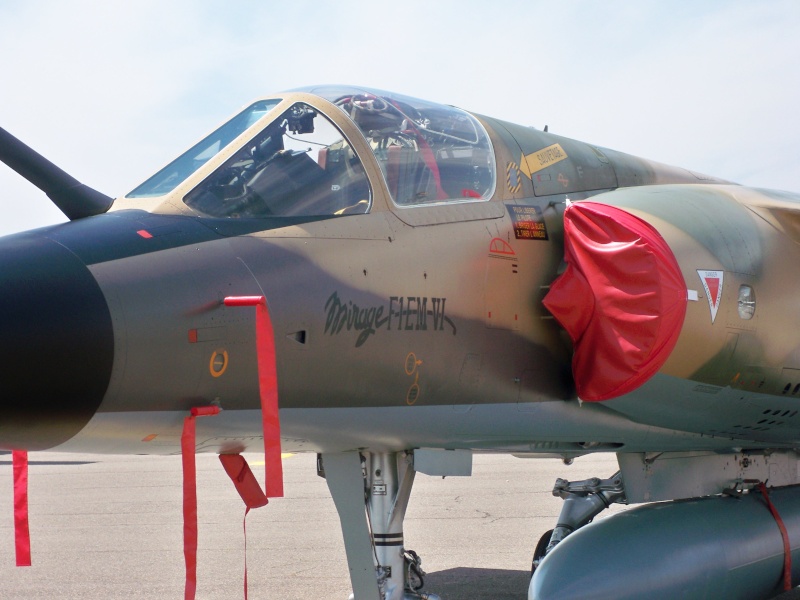
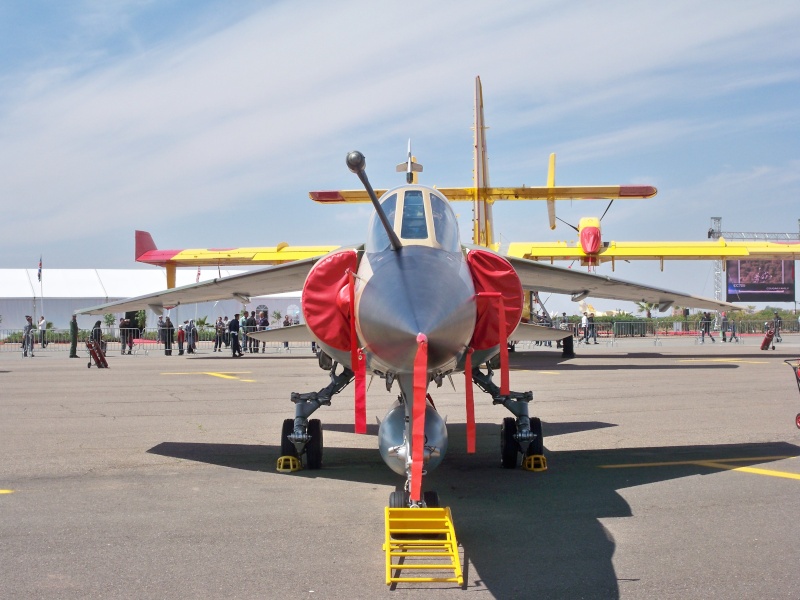
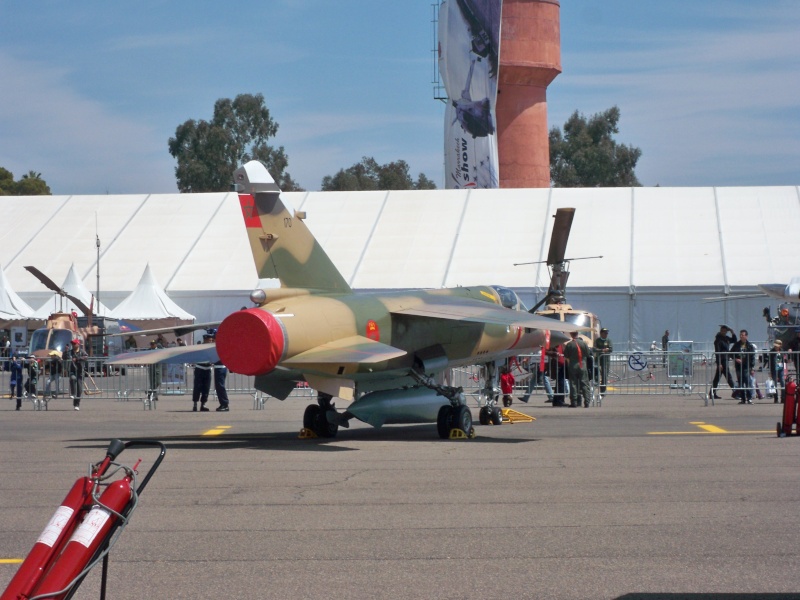






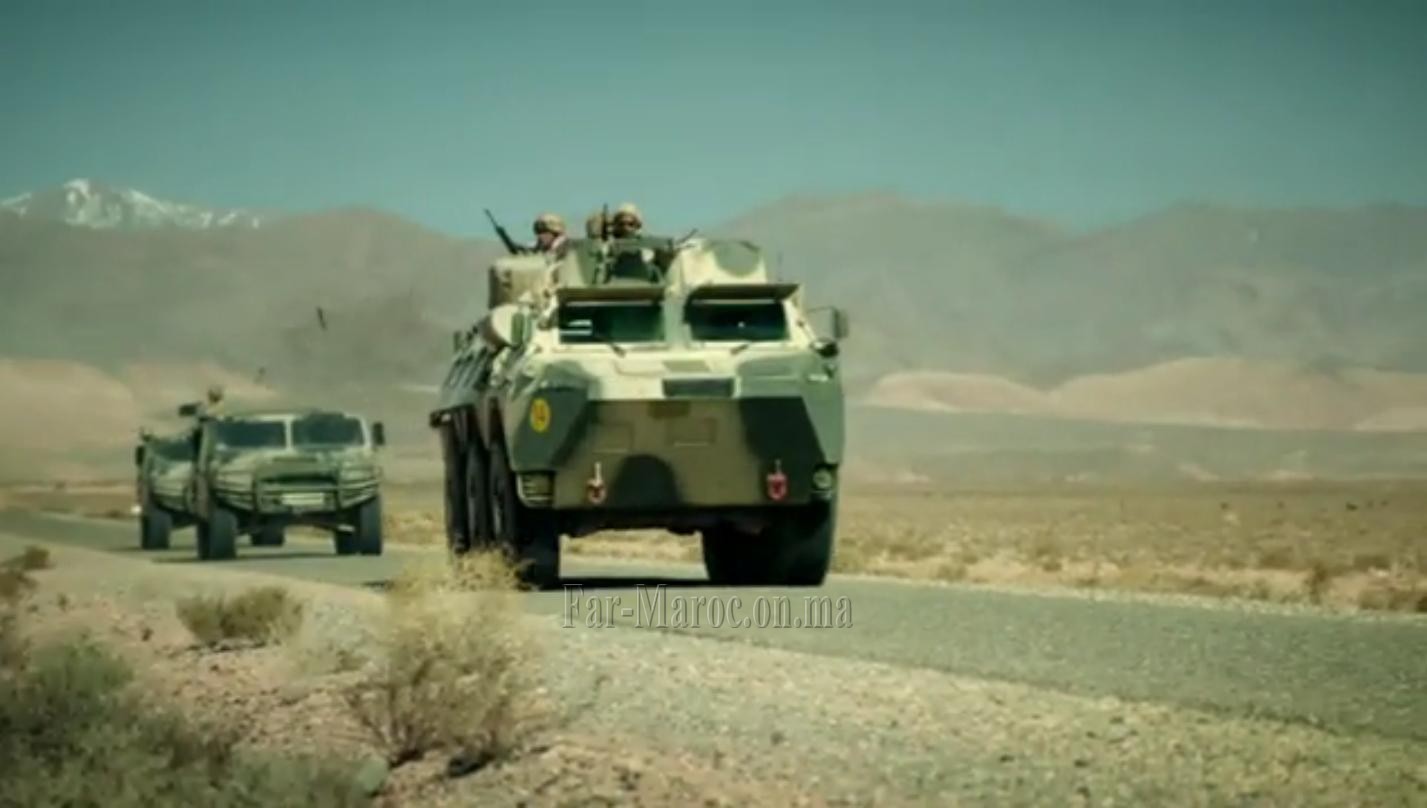

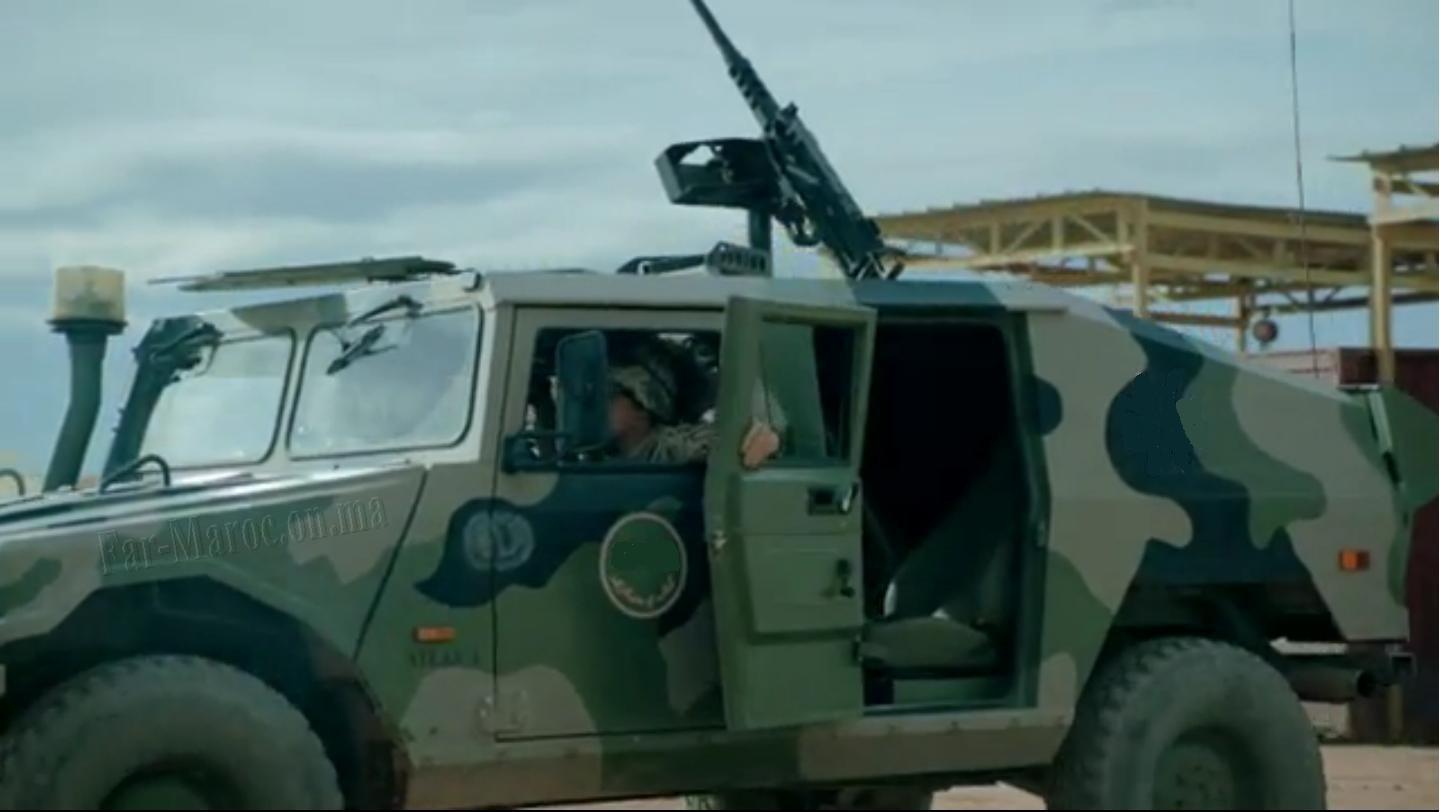


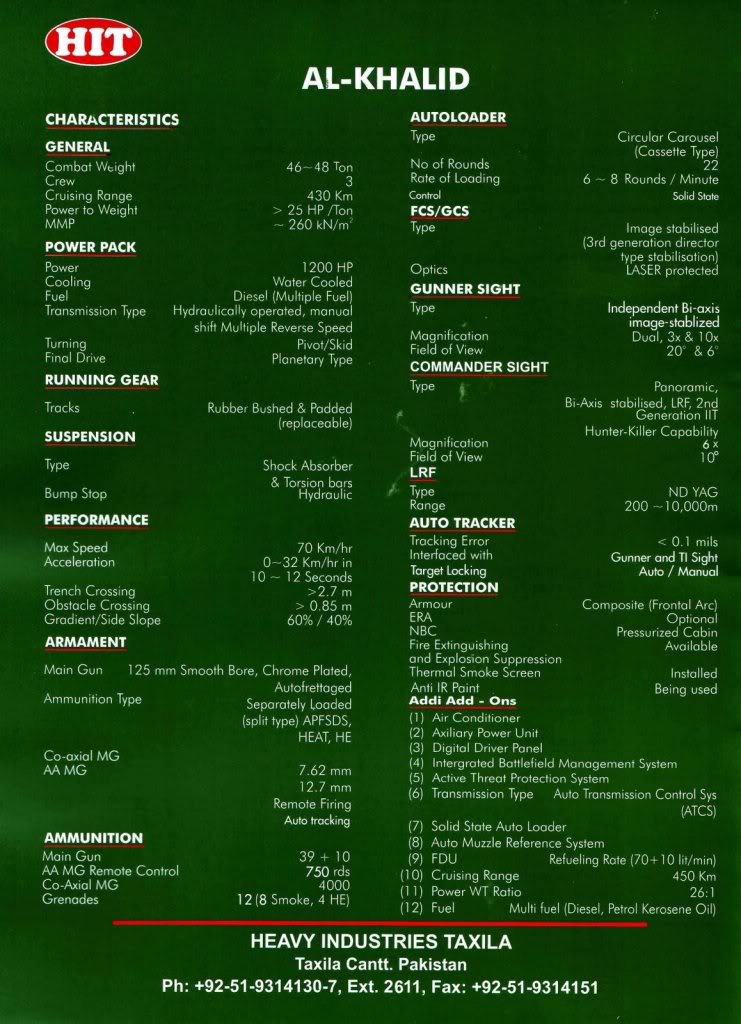














Marine marocaine
dans Afrique / Proche Orient
Posté(e)
FREMM Mohamed 6 :
RMN Tarik Ben Ziyad & Sultan Moulay Ismail :